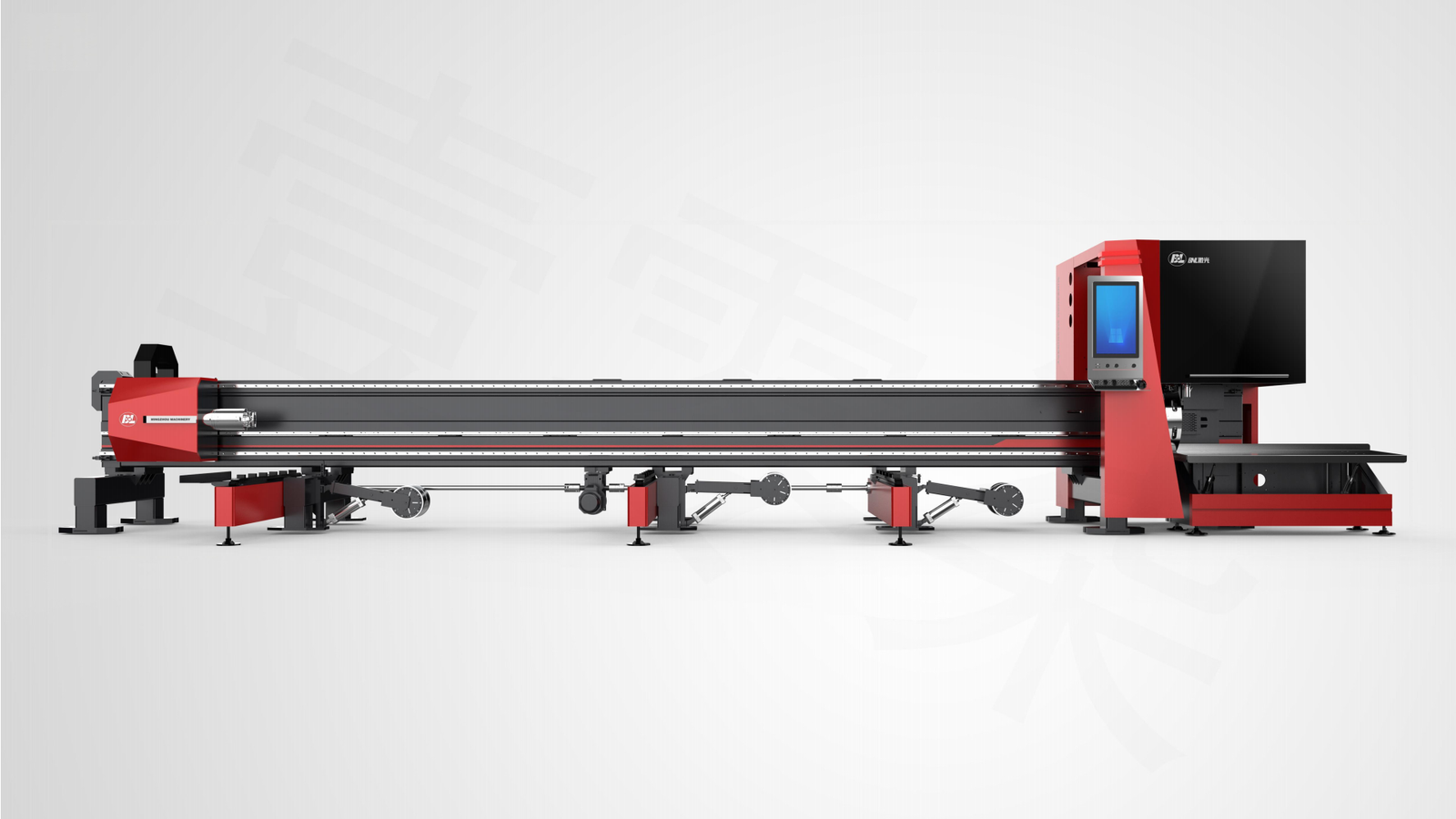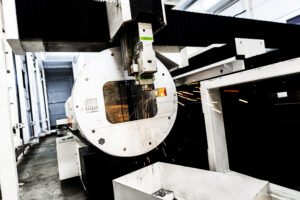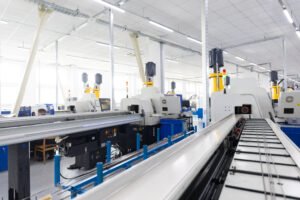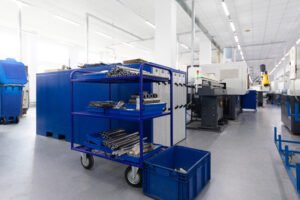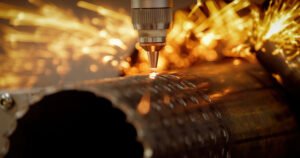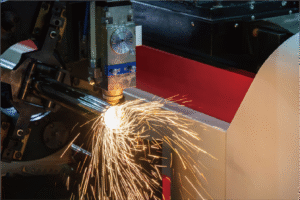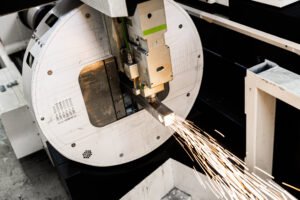Почему производители медицинского оборудования предпочитают прецизионные станки для резки металлических труб
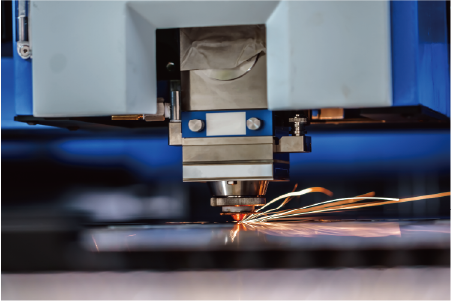
Are you struggling with the stringent demands of medical device manufacturing and the absolute need for precision? Manual cutting or outdated machinery can lead to costly errors, material waste, and failure to meet the exacting standards of this critical field. Discover how advanced precision metal tube cutting machines revolutionize production for medical device manufacturers.
Precision metal tube cutting machines are vital for medical device manufacturers due to the industry's strict requirements for accuracy, material integrity, and repeatable quality. They enable the production of intricate components like stents and needles with micron-level precision, directly impacting patient safety and device efficacy while ensuring regulatory compliance.
The medical device industry operates under a microscope, where every component's integrity is critical for patient well-being. This intense scrutiny demands manufacturing processes that are not only efficient but also flawlessly precise. Join me as we explore why embracing state-of-the-art metal tube cutting technology is not merely an upgrade, but a fundamental necessity for achieving unparalleled quality and compliance in this vital sector.
In my 25 years navigating the metal fabrication landscape, I've seen firsthand how the medical device sector stands apart. It's not just about cutting metal; it's about shaping futures. Companies face immense pressure from regulatory bodies like the FDA and CE, requiring impeccable traceability and validation at every stage. This environment necessitates a critical shift from traditional, often error-prone methods to highly automated, precision-driven solutions. Consider the increasing complexity of minimally invasive surgical tools or implantable devices; these components often feature intricate geometries within tiny dimensions. Achieving such complexity consistently, at scale, and without compromising material integrity (e.g., preventing micro-cracks or heat-affected zones) is beyond the scope of conventional machinery. Research indicates that defective medical devices can lead to severe patient outcomes and massive recalls, costing billions. Thus, manufacturers aren't just seeking a machine; they're investing in a certified, reproducible, and ultimately, life-saving process. This critical need underscores the pivotal role of advanced cutting technology.
What challenges do medical device manufacturers face that require precision metal tube cutting?
Are you grappling with the immense pressure of meeting strict medical device standards while managing complex component designs? Traditional cutting methods often fall short, leading to high rejection rates, material waste, and significant compliance risks in a zero-tolerance industry. Precision metal tube cutting machines directly address these critical manufacturing hurdles.
Medical device manufacturers face challenges including stringent regulatory compliance, the need for micron-level precision in complex geometries, and minimizing material waste. They also contend with maintaining sterile environments and ensuring reproducibility across production batches, all of which necessitate highly accurate and reliable metal tube cutting solutions.
The medical device industry is unique in its unwavering demand for perfection. From surgical instruments to implantable devices, every component must function flawlessly, often within the human body. This inherent requirement translates into a formidable set of manufacturing challenges that conventional processes simply cannot overcome. Manufacturers must not only achieve extreme accuracy but also manage costly materials like titanium and specialized stainless steels1, making waste reduction paramount. The drive for innovation means designs are increasingly intricate, pushing the boundaries of what's physically possible to manufacture consistently and at scale. Understanding these core challenges is the first step toward appreciating the indispensable role of advanced precision cutting technologies, which I’ve personally seen revolutionize countless production lines over my career, turning what seemed like impossible specifications into tangible realities.
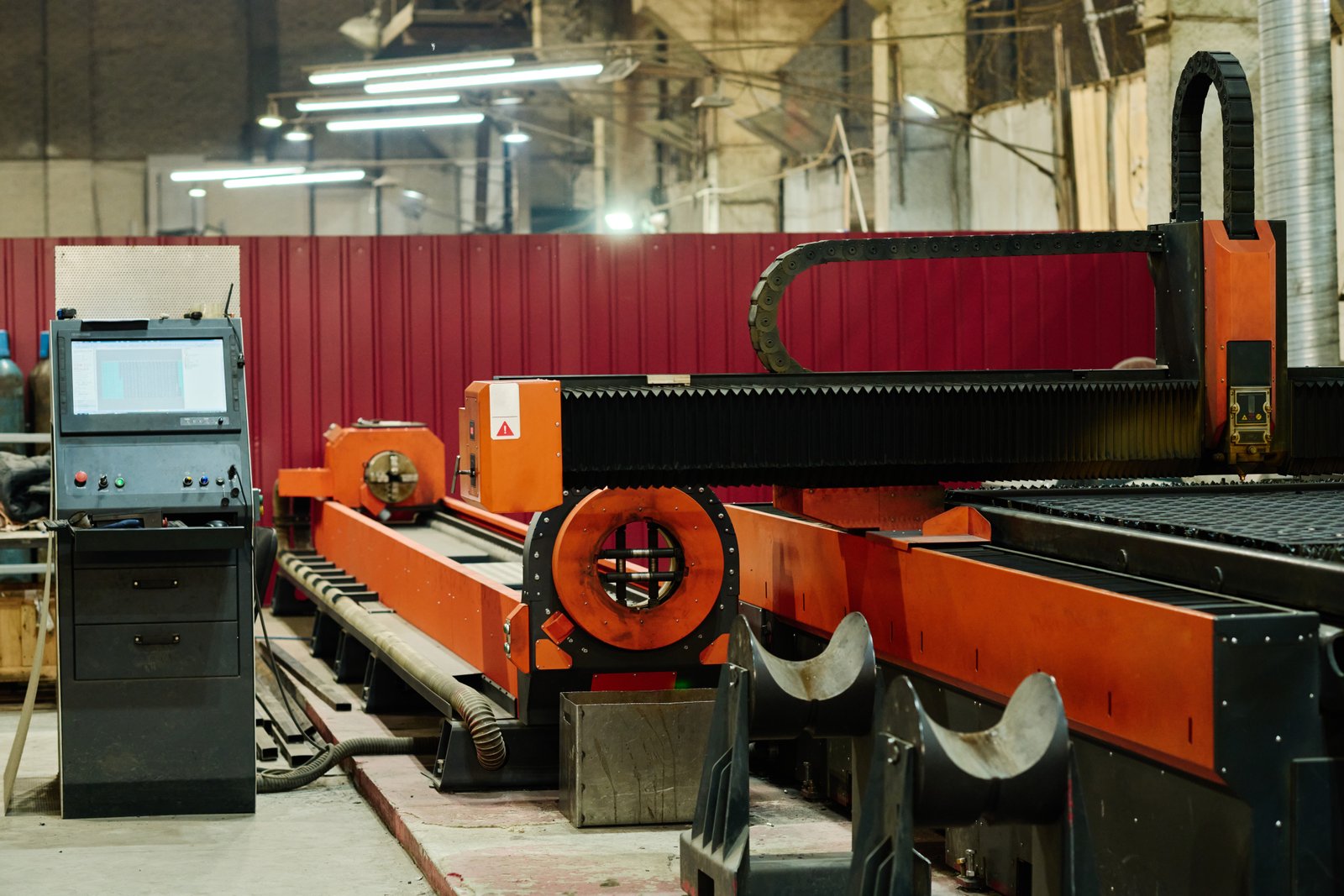
I. Stringent Regulatory Compliance and Quality Assurance
The medical device industry is arguably one of the most heavily regulated sectors globally, with bodies like the FDA in the U.S. and the EMA in Europe imposing strict guidelines. These regulations, such as ISO 13485 (Quality Management Systems for Medical Devices) and 21 CFR Part 820 (Quality System Regulation), mandate impeccable quality, traceability, and documentation for every component. Manufacturers are not just producing parts; they are producing components that directly impact human health and safety. Any deviation from specifications, even at the micron level, can have catastrophic consequences, leading to product recalls, legal liabilities, and irreparable damage to a company's reputation. This zero-tolerance environment means that every step in the manufacturing process, especially foundational ones like material cutting, must be meticulously controlled and validated to ensure absolute consistency and adherence to design specifications.
Achieving this level of compliance with traditional cutting methods, such as manual sawing or abrasive cutting, is often problematic. These methods frequently introduce inconsistencies, burrs, heat-affected zones (HAZ), and micro-fractures, which are unacceptable for medical-grade materials. The need for subsequent post-processing steps—like deburring, cleaning, and annealing—adds significant time, cost, and introduces additional points of potential contamination or damage. For instance, a stent with an uneven cut edge could lead to tissue irritation or failure upon implantation. The challenge extends to maintaining batch-to-batch consistency; a machine must perform the same precise cut millions of times over its lifespan, under validated conditions, to ensure every single device meets the same high standard. This pursuit of uncompromised quality is a continuous battle, pushing manufacturers to seek out solutions that inherently minimize variation and maximize precision from the outset.
From MZBNL's perspective, we understand this deeply. Our laser tube cutting machines are designed with these regulatory pressures in mind. The precision and repeatability of our systems drastically reduce the need for extensive post-processing, minimizing potential contamination and saving significant validation efforts. For example, our Инновационный безотходный хвостовой материал not only boosts efficiency but also ensures that material quality is maintained throughout the entire tube length, reducing the risk of using compromised sections. This directly contributes to higher first-pass yield rates and easier adherence to the stringent quality management systems demanded by the medical sector.
II. Complex Geometries and Miniaturization Demands
Modern medical devices are characterized by increasingly complex designs and extreme miniaturization, particularly in areas like minimally invasive surgery, neurovascular interventions, and implantable sensors. Consider the intricate lattice structure of a cardiovascular stent, the ultra-fine tip of a biopsy needle, or the multi-lumen design of a catheter. These components often feature internal and external geometries that demand sub-millimeter precision, with wall thicknesses sometimes less than 100 microns. Traditional machining struggles with such delicate and intricate cuts without deforming the material, creating excessive heat, or producing unacceptable kerf widths. The challenge is compounded by the need to cut these shapes from exotic and often expensive materials like Nitinol (nickel-titanium alloy for shape memory), medical-grade stainless steels (e.g., 316L), and various titanium alloys, which have unique properties that complicate machining.
The shift towards miniaturization is driven by clinical benefits: smaller incisions, reduced patient recovery times, and enhanced surgical precision. However, it places immense pressure on manufacturing capabilities. Achieving these complex geometries requires cutting tools that can operate with surgical precision, leaving no burrs or recast layers that could affect device performance or patient safety. The cutting process must be non-contact and non-deforming to preserve the material's integrity and mechanical properties. Furthermore, designs are often iterated rapidly, requiring flexible manufacturing systems that can adapt quickly to new prototypes and production runs without extensive retooling or programming downtime. This agility is crucial for faster time-to-market in a competitive industry where innovation is key.
This is precisely where MZBNL's Инновационная система No-CAD offers a significant advantage. For medical device prototypes or custom small-batch production, the ability to process standard tube types and hole patterns by simply entering parameters, without requiring complex 3D drawings, dramatically accelerates the design-to-production cycle. I've heard stories from engineers, similar to Ahmed Al-Farsi's initial struggles with CAD complexity, who spend days translating intricate medical device designs into machine-readable formats. Our system cuts this down to hours, allowing for rapid iteration and validation of new device concepts. This agility, combined with the precision of laser cutting, makes complex and miniaturized components economically viable and consistently accurate.
III. Material Waste and Cost Optimization
Medical-grade materials are notoriously expensive. Exotic alloys like Nitinol, various platinum-iridium alloys, and high-purity stainless steels are chosen for their biocompatibility, strength, and specific mechanical properties. Consequently, even a small amount of material waste due to inaccurate cuts, rejected parts, or excessive tail ends can lead to significant financial losses. Traditional cutting methods, particularly those involving mechanical contact, often result in a larger kerf (the width of the cut) or require more material for fixturing and holding, contributing to greater material consumption. Furthermore, the need for extensive post-processing (e.g., grinding, polishing, chemical etching) to remove burrs or achieve final dimensions also contributes to material loss and added processing costs.
The economic impact of waste is profound. In a high-volume production scenario, even a 1% improvement in material utilization can translate into hundreds of thousands, or even millions, of dollars in savings annually. Beyond the raw material cost, there's the cost associated with disposing of rejected parts, the energy consumed in re-processing, and the time lost in rectifying errors. Manufacturers are constantly seeking ways to optimize every gram of material, not just for cost reasons but also for sustainability and resource efficiency. This push for "lean" manufacturing principles in the medical sector puts a premium on cutting technologies that minimize kerf, maximize yield from each tube, and produce finished parts directly without significant waste.
This is where MZBNL’s Инновационный безотходный хвостовой материал truly shines. Unlike conventional systems that leave unusable tail material, our redesigned cutting logic eliminates this waste as long as the remaining section is smaller than the product length. This seemingly small innovation can lead to substantial material savings over time, especially when dealing with expensive medical alloys. I recall a client, similar to Ahmed, who was initially skeptical about the "zero-waste" claim. After implementing our machine, they reported a 7-10% reduction in raw material consumption for their surgical instrument line, directly impacting their bottom line.
| Зона вызова | Impact on Medical Device Manufacturing | MZBNL Solution/Benefit |
|---|---|---|
| Stringent Regulatory Compliance | High rejection rates, legal liabilities, costly recalls, validation burden. | Precision & repeatability reduce post-processing; Безотходный материал хвостовой части ensures consistent material quality, aiding ISO 13485 adherence. |
| Complex Geometries & Miniaturization | Difficulty with intricate cuts, material deformation, slow prototyping. | Инновационная система No-CAD accelerates design-to-production cycle for complex parts; non-contact laser ensures material integrity and precise contours. |
| Material Waste & Cost Optimization | Significant financial loss due to expensive medical-grade alloys. | Инновационный безотходный хвостовой материал maximizes material utilization; precision cutting minimizes kerf and rejects, leading to substantial cost savings and lean manufacturing. |
Medical devices require micron-level precisionПравда
Components like stents and surgical tools often have tolerances under 100 microns to ensure proper function and patient safety.
Traditional cutting meets medical standardsЛожь
Manual methods often create micro-fractures and heat-affected zones that violate medical device regulations requiring pristine material integrity.
Why is precision crucial for metal tube cutting in medical device manufacturing?
The medical device industry demands absolute precision for every component. Even minor deviations can lead to device failure, patient harm, and regulatory non-compliance, jeopardizing both product performance and brand reputation. Precision cutting is therefore not merely an advantage; it is a non-negotiable requirement for ensuring safety and efficacy.
Precision is crucial for medical tube cutting due to its direct impact on patient safety, device efficacy, and strict regulatory compliance. It ensures material integrity, prevents contamination, and guarantees components function flawlessly within the human body, providing consistent and reliable performance for life-critical applications.
Building on the formidable challenges medical device manufacturers face, it becomes clear that precision isn't just a desired feature—it's the bedrock upon which trust, safety, and functionality are built. The components we discuss, from delicate stents2 to robust surgical tools, operate within the incredibly sensitive environment of the human body. As I’ve learned over my decades in this field, any imperfection, however minute, can have profound consequences. It’s not simply about aesthetics; it's about preventing tissue irritation, ensuring proper mechanical function under stress, and upholding the integrity of biocompatible materials. This absolute dependency on flawless execution explains why the "why" behind precision in medical device cutting is so much more critical than in almost any other industry.
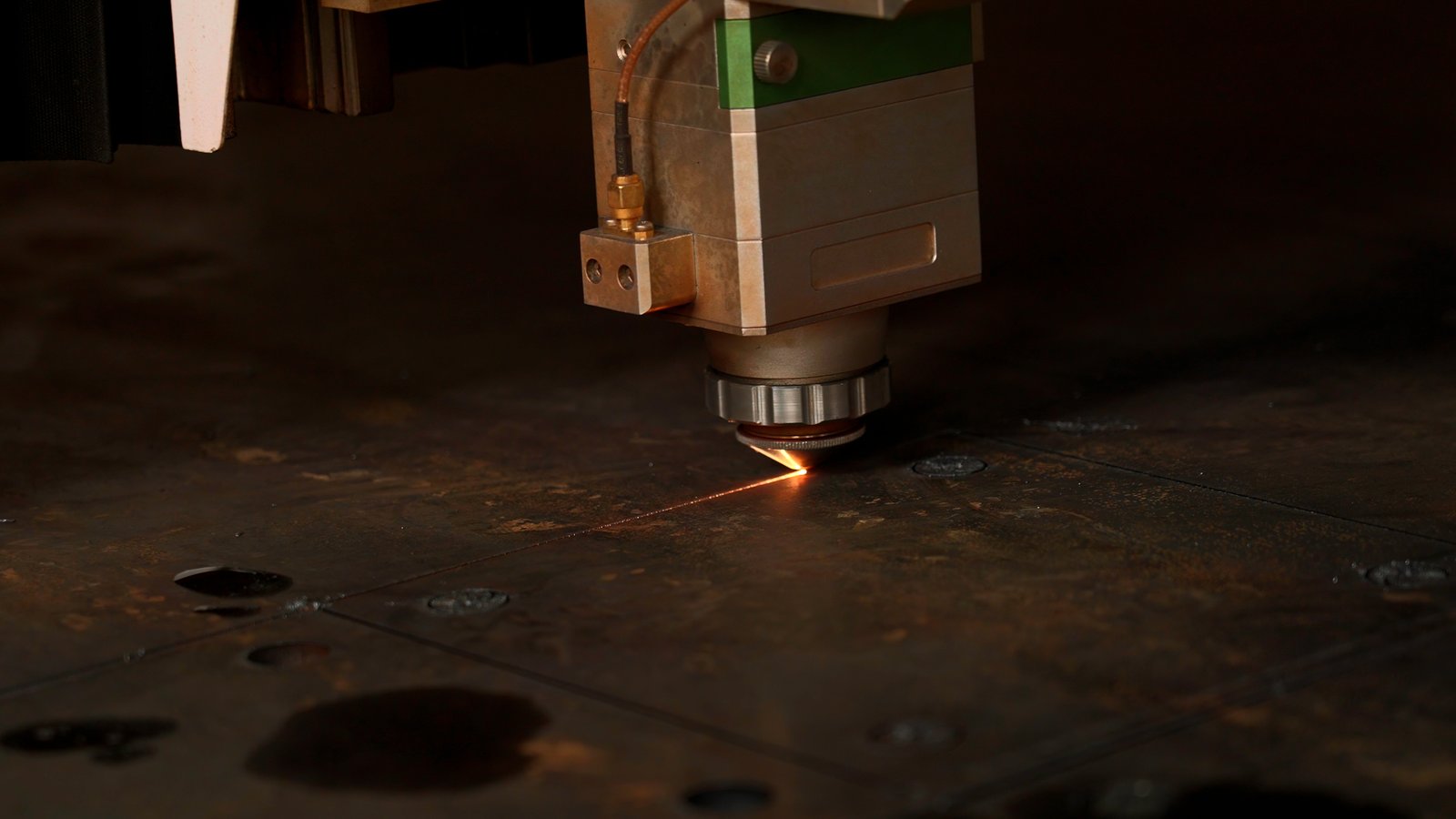
I. Patient Safety and Device Efficacy
The primary reason precision is paramount in medical device manufacturing is its direct correlation with patient safety and device efficacy. Every component in a medical device, no matter how small, plays a critical role in its overall function and interaction with biological systems. For instance, a stent with a jagged edge or an implant with surface imperfections could lead to tissue damage, inflammation, or even thrombosis, causing severe complications for the patient. Similarly, a surgical instrument that isn't precisely calibrated could lead to inaccurate procedures or increased invasiveness. The effectiveness of a device—its ability to perform its intended function reliably over time—is directly tied to the dimensional accuracy and surface finish of its individual parts. Without micron-level precision, the intricate mechanisms of modern medical devices simply cannot operate as designed, potentially compromising diagnostic accuracy or therapeutic outcomes.
Furthermore, medical devices often interact with highly sensitive biological environments, requiring materials to be perfectly clean and free from contaminants or residues. Traditional cutting methods, which can create burrs, micro-cracks, or introduce lubricants, necessitate extensive and costly post-processing steps like cleaning, deburring, and polishing. Each of these steps introduces additional risks of contamination or damage to the delicate components. Precision laser cutting, by contrast, offers a non-contact method that produces clean edges with minimal heat input, significantly reducing the need for secondary operations and minimizing the potential for introducing foreign particles. This cleaner process is vital for ensuring biocompatibility and preventing adverse reactions once the device is implanted or used internally.
At MZBNL, we prioritize the output quality that directly translates to patient safety. Our `High-speed and high-precision cutting3 capabilities ensure that components like those found in cardiovascular or neurological devices are manufactured with the exact specifications required, minimizing any risk of malfunction. Our systems produce cuts with minimal burrs and heat-affected zones, crucial for maintaining the integrity of sensitive medical-grade alloys. This dedication to precision helps our clients achieve the unwavering reliability that is non-negotiable in the medical field.
II. Regulatory Adherence and Validation
The rigorous regulatory landscape governing medical devices, including standards set by the FDA, CE, and various ISO bodies (e.g., ISO 13485 for Quality Management Systems), places an enormous emphasis on consistency, reproducibility, and documented quality. Precision in metal tube cutting directly facilitates adherence to these standards. Regulatory bodies demand that manufacturers demonstrate control over their processes and consistency in their output. This means that every single part produced must fall within extremely tight tolerances, and the manufacturing process itself must be validated to consistently produce compliant products. Deviations, even minor ones, can lead to non-conformance reports, extensive investigations, product recalls, and significant fines.
Validation processes, such as Installation Qualification (IQ), Operational Qualification (OQ), and Performance Qualification (PQ), are integral to medical device manufacturing. These processes require verifiable data proving that equipment is correctly installed, operates as intended, and consistently produces products meeting specifications. A precision cutting machine, with its ability to deliver repeatable cuts with minimal variation, significantly streamlines these validation efforts. Its consistent output simplifies the collection of process data and provides clear evidence of control, reducing the complexity and time involved in achieving and maintaining regulatory approvals. This consistency also aids in traceability, allowing manufacturers to pinpoint exactly how and when each component was made, a critical requirement for batch control and recall management.
Our MZBNL machines are built to meet these exacting regulatory demands head-on. The `Интеллектуальные и цифровые системы4 integrated into our machines provide precise control and data logging capabilities, which are invaluable for comprehensive validation and auditing processes. For clients like Ahmed Al-Farsi, who is expanding his business and considering distributing technology, demonstrating a track record of consistent quality and regulatory compliance is paramount for market acceptance and long-term success. Our machines provide the robust, data-driven performance necessary for obtaining and maintaining these crucial certifications, reducing the burden on quality assurance teams and ensuring smoother pathways to market.
III. Material Integrity and Performance
Beyond patient safety and regulatory compliance, precision in metal tube cutting is vital for preserving the inherent integrity and maximizing the performance of medical-grade materials. Many alloys used in medical devices, such as Nitinol, titanium alloys, and specialized stainless steels, are chosen for their unique mechanical, thermal, and biocompatibility properties. Improper cutting techniques can significantly alter these properties, undermining the material's intended performance. For example, excessive heat generated during cutting can create a Heat Affected Zone (HAZ) or recast layer, which can change the material's microstructure, reduce its fatigue life, or alter its corrosion resistance. For devices like Nitinol stents, maintaining superelasticity and shape memory is critical, and these properties can be severely degraded by thermal damage.
Traditional mechanical cutting methods, or even less advanced laser systems, might struggle to maintain these properties consistently. They often leave burrs that require secondary deburring, a process that can introduce additional stress, material removal, or even micro-fractures in delicate parts. The alternative, chemical etching, adds another complex and often environmentally challenging step. The goal is to achieve a net-shape cut directly from the machine, minimizing any further processing that could compromise the material. Precision laser cutting, especially with optimized parameters, provides a focused, non-contact thermal process that can achieve incredibly fine cuts with minimal heat dispersion, preserving the original material properties right up to the cut edge.
MZBNL's laser cutting machines are engineered to deliver clean, precise cuts with minimal impact on material integrity. Our advanced control systems allow for precise power and speed modulation, optimizing the cutting process for various medical alloys to prevent adverse thermal effects and mechanical distortion. This means that the intricate lattice of a stent, for example, will retain its designed flexibility and fatigue resistance, or a surgical needle will maintain its precise sharpness and durability. This commitment to preserving material performance is a cornerstone of our technology, ensuring that every product manufactured using our machines meets the highest standards of structural integrity and functional reliability.
Precision prevents tissue damageПравда
Imperfect edges on medical components can cause inflammation or thrombosis in patients.
Lubricants improve medical cutsЛожь
Traditional cutting lubricants require costly post-processing and risk contaminating biocompatible materials.
How do precision metal tube cutting machines address common manufacturing challenges?
Common manufacturing hurdles in medical device production often lead to inefficiencies and quality compromises. Manual processes are notoriously slow, inconsistent, and error-prone, hindering overall efficiency and quality control. Precision metal tube cutting machines directly overcome these challenges, fundamentally enhancing productivity, consistency, and product quality.
Precision metal tube cutting machines address manufacturing challenges by automating complex cuts, significantly reducing human error, and minimizing material waste. They ensure high repeatability, improve throughput, and simplify quality control, directly leading to increased efficiency, reduced operational costs, and consistent adherence to strict medical device standards.
We've explored why precision is crucial and the specific challenges medical device manufacturers face. Now, let’s pivot to the tangible solutions. How do these sophisticated machines actually transform a production floor? From my 25 years of experience, I’ve personally witnessed manufacturers, much like Ahmed Al-Farsi with his drive for automation, shift from manual, error-prone workflows to highly efficient, high-yield automated lines. It's not just about adding a new piece of equipment; it's about integrating a smart system that fundamentally changes the manufacturing paradigm, boosting both productivity and the meticulous quality control demanded by the medical sector.
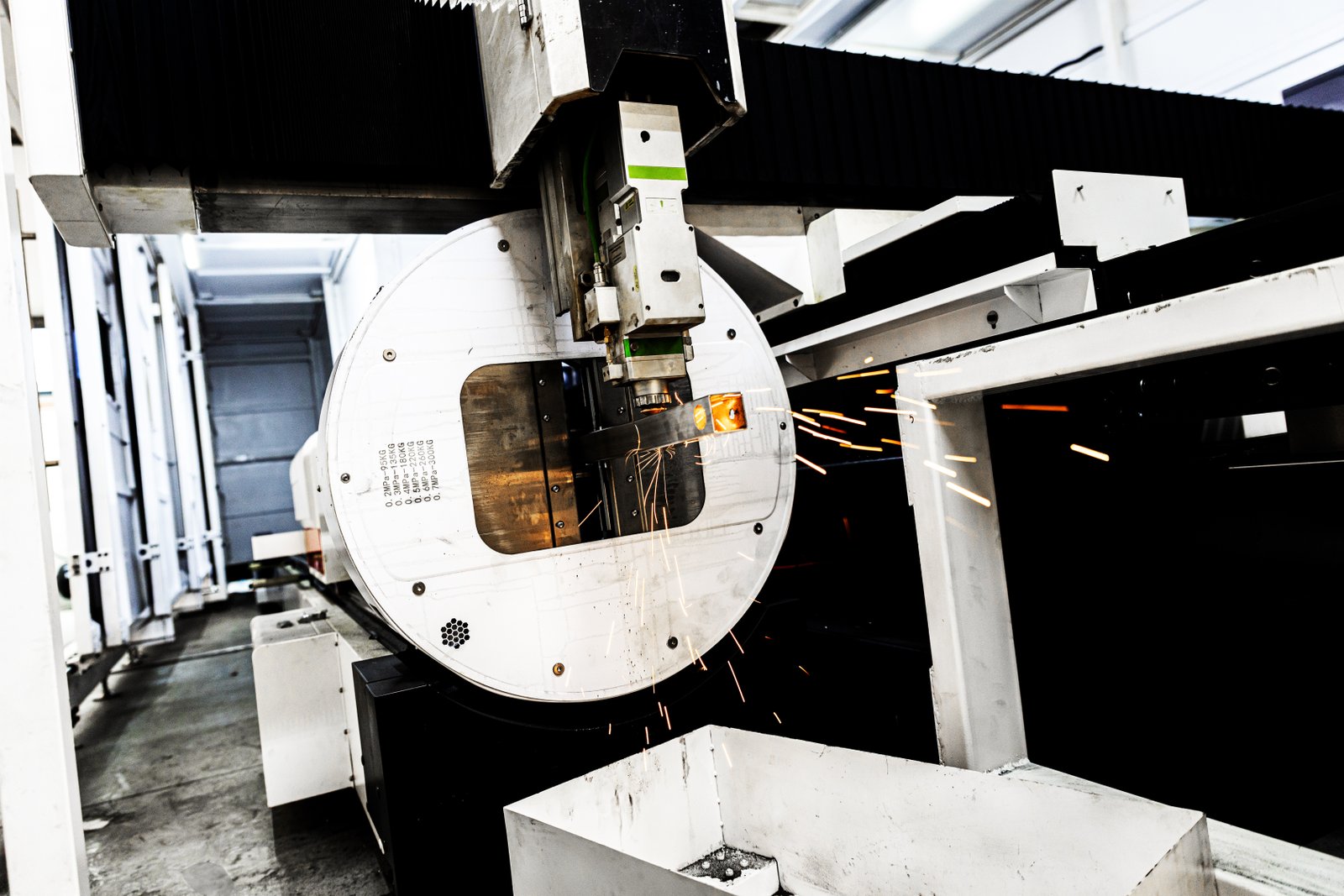
I. Automation and Reduced Human Error
One of the most significant ways precision metal tube cutting machines address manufacturing challenges is through advanced automation5, which dramatically reduces reliance on manual processes and, consequently, minimizes human error. In traditional medical device manufacturing, manual loading, positioning, and cutting of delicate tubes are labor-intensive, time-consuming, and highly susceptible to variations introduced by operator fatigue, inexperience, or inconsistency. For intricate designs or high-volume production, even slight misalignments or inaccurate measurements can lead to scrapped parts, incurring substantial material and labor costs. This issue is amplified in an industry where component failure can have life-or-death consequences. Furthermore, the high operator turnover, a pain point shared by many manufacturers including our typical customer Ahmed Al-Farsi, means constant retraining burdens and a perpetual risk of quality dips.
Automated precision cutting machines mitigate these risks by taking human variability out of the equation for repetitive, high-tolerance tasks. Modern systems use sophisticated sensors, robotic loading, and software-driven controls to ensure consistent positioning and cutting paths for every single tube. This automation not only enhances precision and repeatability but also frees up skilled technicians to focus on higher-value tasks such as quality assurance, machine maintenance, and process optimization. The system precisely follows digital designs, eliminating subjective judgments or manual errors that often plague traditional cutting methods. The inherent consistency of automated processes is invaluable for meeting the stringent quality management system requirements of medical device manufacturing, where every part must be identical to the last.
В компании MZBNL мы Автоматическая перфорация и резка интегрированная машина exemplifies this automation. Our Инновации на переднем крае, for instance, automatically pulls tubes into the machine, increasing feeding efficiency by about 40% and reducing operator labor intensity by approximately 40%. This not only boosts productivity but also drastically reduces the potential for manual handling errors. Coupled with our Операционная система No-CAD, which simplifies programming by allowing parameter entry rather than complex 3D drawings, the training burden is significantly reduced—from 15 days at the factory to just 1 day of on-site training. This ease of use directly addresses the challenges of operator turnover, ensuring that precision and efficiency are maintained regardless of who is operating the machine.
II. Enhanced Throughput and Efficiency
Precision metal tube cutting machines are not just about accuracy; they are powerful tools for significantly enhancing overall production throughput and operational efficiency. Traditional cutting methods, whether mechanical or less advanced laser systems, often suffer from slower speeds, longer setup times, and the need for multiple post-processing steps (like deburring, cleaning, or grinding) that bottleneck the production line. For medical device components, which often have intricate cuts and precise finishes, these secondary operations can add a disproportionate amount of time and cost to the manufacturing process, slowing down time-to-market for critical devices. In a competitive market, where innovation cycles are rapid, the ability to quickly scale production without compromising quality is a major competitive advantage.
Advanced laser cutting machines, like those developed by MZBNL, leverage focused energy to cut complex geometries at high speeds, often in a single pass. Their non-contact nature eliminates tool wear and reduces the need for frequent tool changes, contributing to continuous operation. Furthermore, Интеграция нескольких процессов, such as combined laser cutting and punching capabilities, means that multiple operations can be performed on a single machine, eliminating the need to transfer parts between different workstations. This integration streamlines the workflow, reduces handling, and minimizes work-in-progress inventory, all contributing to a leaner and more efficient manufacturing process. The ability to rapidly switch between different product designs with minimal retooling—a feature particularly enhanced by intuitive software interfaces—also supports agile manufacturing and faster prototyping.
MZBNL’s commitment to High-speed and high-precision cutting directly translates to enhanced throughput. Our systems are designed for rapid processing of various tube types and wall thicknesses, ensuring that a high volume of medical components can be produced quickly and accurately. For example, a client specializing in orthopedic implants was able to reduce their production time for a specific component by 30% after implementing our integrated cutting and punching solution, primarily due to the elimination of inter-process handling and the speed of the laser. This efficiency gain not only accelerated their order fulfillment but also freed up valuable floor space and labor resources for other critical tasks, representing a substantial return on investment.
III. Superior Quality Control and Traceability
Precision metal tube cutting machines significantly improve quality control and traceability, addressing two fundamental requirements of medical device manufacturing. With traditional methods, manual inspection is often required for every part, which is labor-intensive, prone to human error, and can miss microscopic defects. Deviations in cutting can lead to parts that don't meet strict dimensional tolerances, affecting assembly, fit, and overall device performance. Furthermore, the lack of real-time data or automated tracking makes it difficult to trace issues back to their origin, complicating root cause analysis during audits or in the event of a recall. The ability to ensure consistent quality from the first piece to the last, and to have a verifiable record of that quality, is paramount.
Modern precision cutting machines incorporate advanced sensing, feedback systems, and digital controls that ensure consistent output. These Интеллектуальные и цифровые системы can monitor cutting parameters in real-time, automatically adjust for slight material variations, and even detect potential issues before they lead to defects. The consistent, precise cuts produced by these machines inherently minimize the need for extensive post-process inspection, as the process itself is highly controlled and validated. Moreover, many high-end machines are equipped with data logging capabilities that capture every detail of the cutting process—from machine settings and material batch numbers to environmental conditions. This data is crucial for regulatory compliance, providing a robust audit trail and enabling complete traceability for every manufactured component.
MZBNL's machines are designed with comprehensive quality control and traceability in mind. Our Интеллектуальные и цифровые системы provide operators with real-time feedback and detailed production reports, ensuring every cut meets the exact specifications. This data allows manufacturers to easily verify compliance with regulatory requirements and provides an invaluable audit trail, streamlining the process of obtaining and maintaining certifications like ISO 13485. For a business owner like Ahmed Al-Farsi, who values suppliers with proven technology and global references, the ability to offer such high levels of verifiable quality control and traceability means not just better products, but a stronger competitive edge in the highly regulated global market. This commitment to data-driven quality is a testament to our integrated R&D and manufacturing approach.
Automation reduces human errorПравда
Precision cutting machines use sensors and robotic controls to eliminate manual inconsistencies that cause defects.
Manual cutting ensures better qualityЛожь
Manual processes are prone to fatigue-induced errors and cannot match automated consistency for medical-grade components.
What benefits do metal tube cutting machines offer to meet medical industry standards?
Meeting rigorous medical industry standards is a constant uphill battle for manufacturers. Failing to comply can result in severe penalties, product recalls, and irreparable loss of market trust, risking your entire operation. Precision metal tube cutting machines provide the crucial advantages needed to consistently exceed these demanding benchmarks.
Precision metal tube cutting machines offer benefits crucial for medical industry standards, including unparalleled repeatability for consistent quality, minimized material waste for cost-effectiveness, and precise cuts that reduce post-processing needs. They enable compliance with stringent regulatory requirements, ensuring product safety and efficacy for patients worldwide.
We've explored the significant manufacturing challenges and how precision machines address them, but the direct benefits these technologies offer for meeting and exceeding medical industry standards are equally compelling. In my experience, helping clients achieve critical certifications faster and with less hassle is a clear indicator of a superior manufacturing process. It's not just about cutting parts; it's about building a reputation for reliability and trust in a sector where lives are at stake. These machines simplify complex compliance journeys, enhance product reliability, and ultimately strengthen a company's competitive standing in the global market.
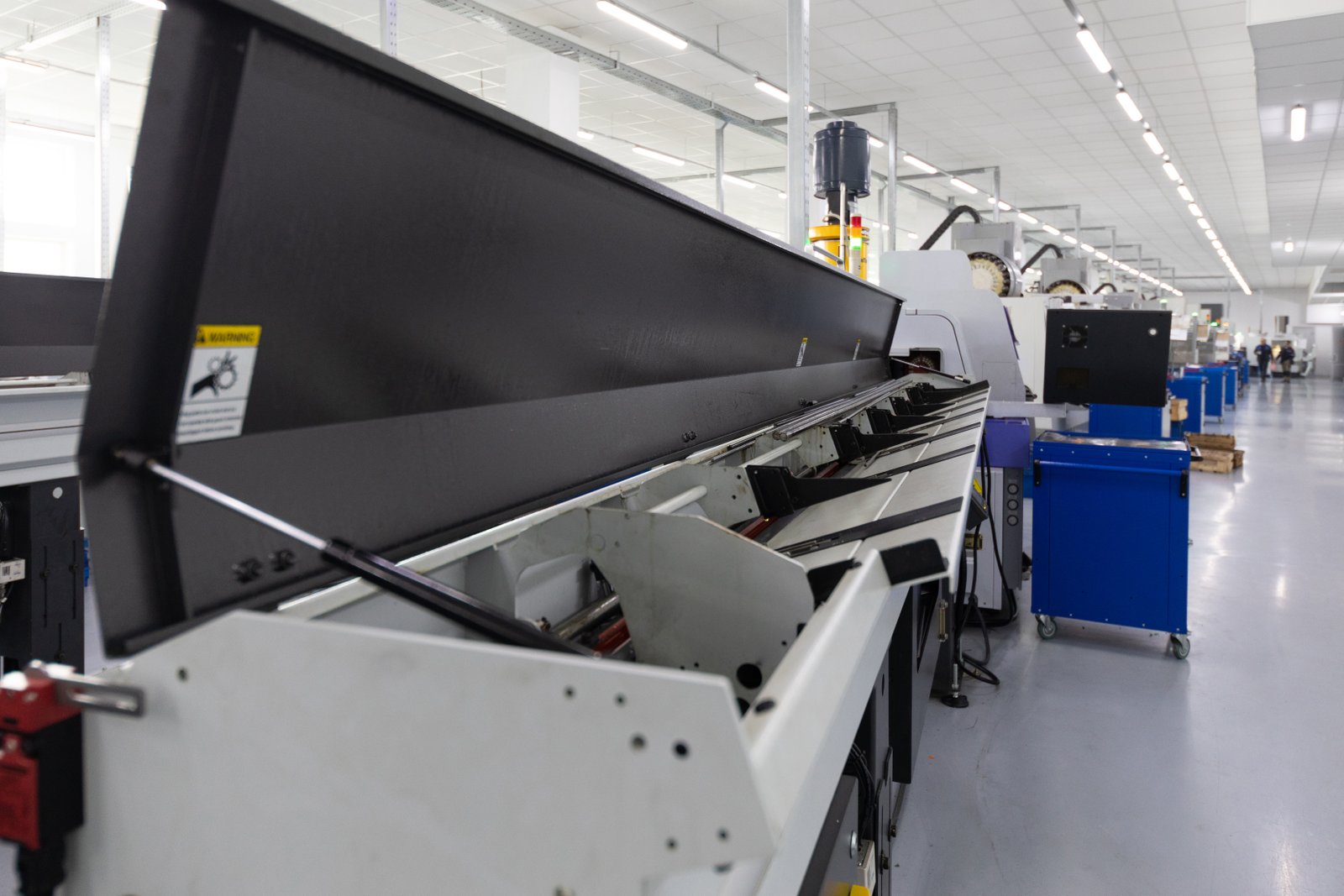
I. Unwavering Repeatability and Consistency
One of the foremost benefits precision metal tube cutting machines offer for meeting medical industry standards is their unparalleled ability to deliver unwavering repeatability and consistency6. Regulatory bodies, especially for critical medical devices, demand that every single component produced is identical to the last, adhering to extremely tight dimensional and material integrity tolerances. Any deviation, even microscopic, can compromise device performance and patient safety, leading to costly recalls or regulatory fines. Achieving this level of uniformity with manual or less precise methods is virtually impossible, as human factors and machine wear inevitably introduce variation.
Precision laser cutting machines, however, are designed with sophisticated control systems that ensure identical cuts across thousands or even millions of parts. Once a program is validated, the machine will execute it with the same precision every time, regardless of shifts, operator changes, or external factors that might influence less automated systems. This inherent consistency is foundational for implementing robust Statistical Process Control (SPC) and for gathering the verifiable data required by quality management systems like ISO 13485. The ability to consistently produce components that are within specification simplifies quality assurance processes, reduces the need for extensive post-production inspection, and significantly lowers the likelihood of defective products reaching the market.
At MZBNL, our robust machine designs and advanced digital controls are specifically engineered for this level of repeatability. Our clients rely on our machines to deliver identical parts, batch after batch, which is crucial for their own certifications and market reputation. This predictable, high-quality output translates directly into higher first-pass yield rates and dramatically lower scrap rates, which is a significant advantage in an industry where material costs are very high. For companies expanding into new markets, like Ahmed Al-Farsi's goal of becoming a regional distributor, demonstrating this consistent quality is a powerful differentiator.
II. Optimized Material Utilization and Cost-Efficiency
The high cost of medical-grade raw materials—such as specific grades of stainless steel, titanium, Nitinol, and various precious metal alloys—makes material waste a significant financial burden for manufacturers. Traditional cutting methods, with their wider kerf, need for extra fixturing material, and tendency to produce burrs or defects requiring rejection, inherently lead to substantial material loss. This waste not only inflates production costs but also impacts sustainability efforts and profit margins. Meeting industry standards isn't just about quality; it's also about producing high-quality devices efficiently and economically, ensuring long-term business viability.
Precision metal tube cutting machines directly address this challenge by optimizing material utilization7 to an unprecedented degree. Laser cutting, by its nature, produces a very narrow kerf, meaning less material is vaporized during the cut. More significantly, innovations in machine design, such as MZBNL’s Инновационный безотходный хвостовой материал, maximize the usable length from each tube. Conventional systems often leave an unusable tail section at the end of the tube because the chuck cannot hold it securely enough for the final cut. By redesigning the cutting logic to calculate from the rear chuck as the origin, our system virtually eliminates this leftover tail material, ensuring that every possible millimeter of expensive tubing is converted into a finished product.
This level of material optimization directly contributes to the cost-efficiency required to meet medical industry standards competitively. Industry data consistently shows that even a small percentage reduction in material waste can lead to millions of dollars in annual savings for high-volume manufacturers. For our clients, this means a significant boost to their profitability and a stronger position in the market. I’ve seen companies, much like Ahmed's business that values high cost-performance ratio, realize immediate returns from adopting this technology, proving that precision equipment is not just an expense, but a strategic investment that pays dividends in both quality and financial performance.
III. Facilitating Regulatory Compliance and Certification
The stringent regulatory framework of the medical device industry demands meticulous documentation, verifiable processes, and consistent product quality for initial certification and ongoing compliance. Precision metal tube cutting machines play a critical role in facilitating this complex journey. Unlike manual operations where process parameters can be subjective, automated precision machines operate within tightly defined parameters, with real-time monitoring and data logging capabilities. This verifiable data is invaluable during regulatory audits, providing clear evidence that manufacturing processes are controlled, reproducible, and meet all required specifications. Fewer non-conformances mean smoother audits and faster approvals for new products or market expansions.
Moreover, the clean, precise cuts achieved by these machines reduce the need for extensive post-processing steps such as deburring, polishing, or chemical etching. Each of these secondary operations introduces additional variables, potential sources of contamination, and steps that must themselves be validated. By minimizing these steps, precision cutting simplifies the overall manufacturing process, reducing the risk profile and making validation significantly easier. A smoother, more controlled process inherently leads to a higher likelihood of achieving and maintaining regulatory certifications like FDA approval or CE marking, which are essential for market access globally.
At MZBNL, we design our Интеллектуальные и цифровые системы with regulatory compliance firmly in mind. The consistent output, detailed process data, and reduced potential for human error inherent in our machines directly support our clients' efforts to achieve and maintain the highest industry standards. For our global enterprise clients and potential distributors like Ahmed Al-Farsi, the ability to source equipment that inherently supports rapid compliance and reliable post-sales support is a key differentiator. It means not just a machine, but a partner in navigating the complex landscape of global medical device regulations, ensuring their products meet the highest benchmarks for safety and quality worldwide.
Precision cutting ensures repeatabilityПравда
Precision metal tube cutting machines maintain identical specifications across thousands of parts, which is crucial for medical device compliance.
Manual cutting meets medical standardsЛожь
Human-operated methods cannot achieve the micron-level consistency required by medical regulators, making precision machines essential.
What are the best practices for implementing precision cutting machines in medical device production?
Investing in precision cutting technology is a major strategic step for medical device manufacturers. However, successful implementation is complex and demands careful planning. Without proper integration and optimization, even the best machines can underperform, leading to inefficiencies and lost ROI. Adopting best practices ensures a seamless transition and maximizes your investment's benefits.
Implementing precision cutting machines in medical device production requires best practices like thorough validation, comprehensive operator training, and strategic material selection. Ensuring seamless integration with existing workflows, continuous process optimization, and strong after-sales support are also crucial for maximizing efficiency, ensuring compliance, and achieving optimal return on investment.
We've thoroughly explored the "why" and "how" of precision metal tube cutting in medical device manufacturing, but possessing the best technology is only half the battle. The true measure of success lies in its seamless integration and optimized operation within your production environment. Through my years assisting countless clients, I've learned that a holistic approach to implementation—one that extends beyond merely purchasing hardware—is absolutely critical. This includes rigorous validation, empowering your team with expert training, and continuously refining your processes. MZBNL doesn't just sell machines; we partner with our clients to ensure these best practices are not just understood, but effectively implemented, laying the groundwork for sustained excellence and maximizing the return on your investment.
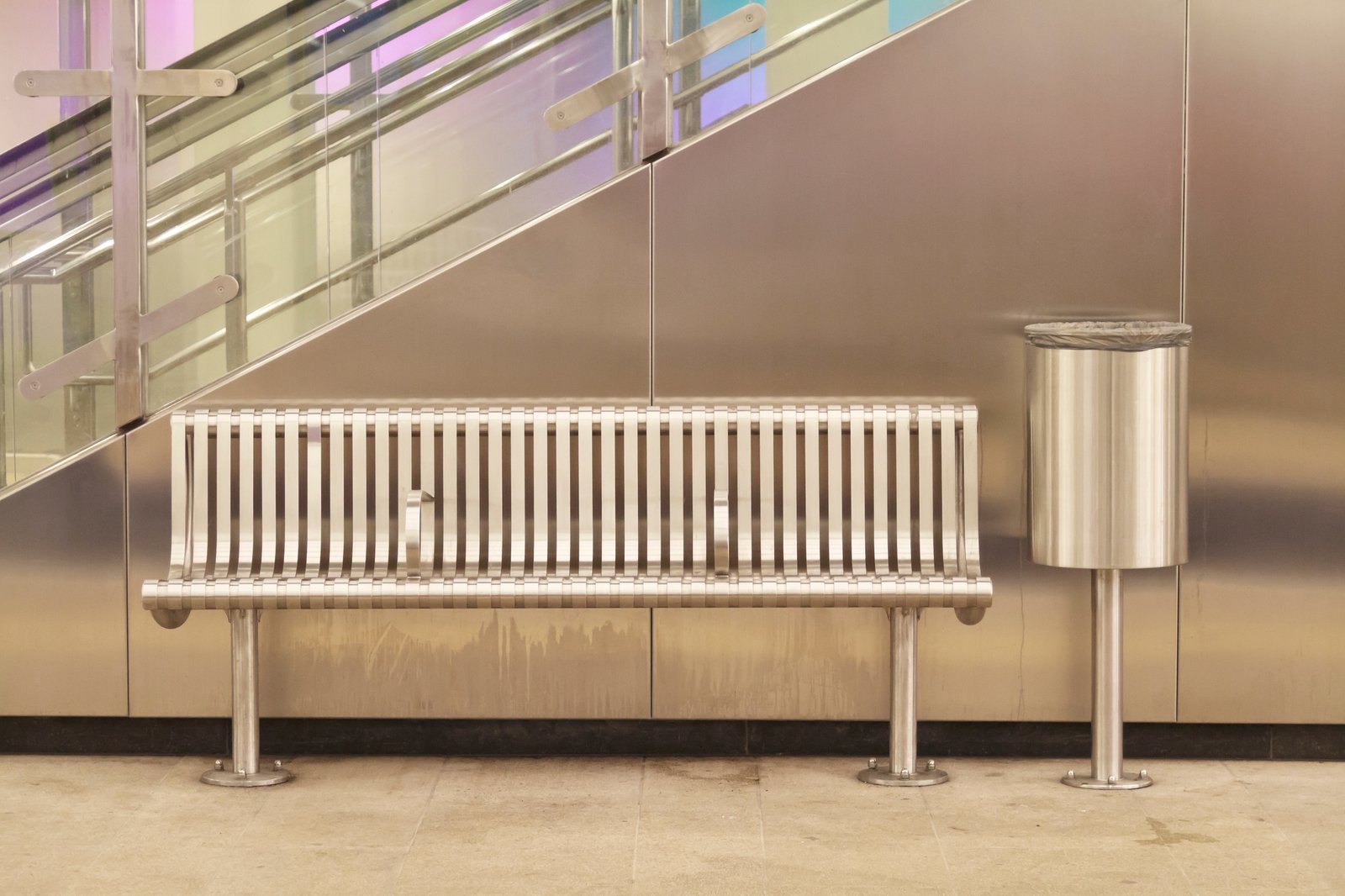
I. Comprehensive Validation and Qualification
One of the most critical best practices for implementing precision cutting machines in medical device production is undertaking comprehensive validation and qualification. Unlike general manufacturing, every piece of equipment and every process in medical device production must be rigorously validated to ensure it consistently performs as intended and meets strict regulatory requirements (e.g., FDA 21 CFR Part 820, ISO 13485). This typically involves three stages: Installation Qualification (IQ), Operational Qualification (OQ), and Performance Qualification (PQ). IQ verifies correct installation and documentation; OQ confirms the equipment operates within specified parameters; and PQ demonstrates that the process consistently produces products meeting all predetermined specifications under actual operating conditions. Without thorough validation, the benefits of a precision machine cannot be fully realized or legally recognized.
Establishing precise process parameters and tolerances8 during OQ and PQ is paramount. This involves testing various settings (e.g., laser power, speed, gas pressure, feed rate) to determine the optimal window for consistent, high-quality output for each specific material and tube dimension. This data must be meticulously collected, analyzed, and documented to create a robust process control plan. Furthermore, challenges often arise when trying to validate automated systems with numerous variables. Manufacturers must ensure their validation protocols are robust enough to account for all potential process variations and environmental factors that could impact the final product. The level of detail required for medical device validation is significantly higher than in many other industries, demanding dedicated resources and expertise.
At MZBNL, we understand the immense importance of validation for our medical device clients. We provide comprehensive documentation and support to assist with IQ, OQ, and PQ protocols. Our engineering team actively works with clients to set up initial process parameters that align with their specific material and design requirements, streamlining the qualification process. This collaboration helps accelerate the time to full production, ensuring that our clients can quickly and confidently integrate our высокоточная резка machines into their validated workflows, minimizing the regulatory burden and demonstrating compliance from day one.
II. Operator Training and Skill Development
While precision cutting machines are highly automated, successful implementation in medical device production still hinges on comprehensive operator training and skill development. It's a common misconception that automation eliminates the need for skilled labor; in reality, it shifts the required skills from manual dexterity to process oversight, programming, maintenance, and quality assurance. Operators need to understand not only how to run the machine but also how to interpret its diagnostic data, perform routine maintenance, troubleshoot minor issues, and recognize when a deviation might occur. In the medical sector, where quality is non-negotiable, a well-trained operator can prevent costly errors and ensure consistent, compliant production.
Addressing the pain point of high operator turnover, a concern shared by our typical customer Ahmed Al-Farsi, means focusing on user-friendliness and efficient training programs. Historically, mastering complex CAD systems and machine operation could take weeks or even months, creating significant training burdens and high costs. A streamlined training process reduces downtime and ensures new operators can quickly become productive members of the team. Moreover, ongoing training ensures that operators stay updated with machine capabilities, software updates, and best practices for optimizing production parameters for various medical components. Empowering operators through knowledge reduces reliance on external support for routine tasks and fosters a more self-sufficient production environment.
MZBNL's Инновационная система No-CAD is a prime example of how we address this best practice. By allowing standard tube types and hole patterns to be processed simply by entering parameters, our system drastically reduces the skill threshold for machine operation. This means operators now only need 1 day of on-site training instead of spending 15 days at the equipment factory, a revolutionary change for efficiency and reducing training costs associated with staff turnover. We are committed to providing extensive post-sales training and continuous support, ensuring that our clients’ teams are fully proficient, confident, and capable of maximizing the performance of their MZBNL machines.
III. Strategic Integration and Continuous Optimization
Effective implementation of precision cutting machines in medical device production demands strategic integration into existing manufacturing ecosystems and a commitment to continuous optimization. Simply dropping a new machine into a factory rarely yields optimal results. Manufacturers must consider how the new equipment interfaces with their overall Manufacturing Execution System (MES), Enterprise Resource Planning (ERP), and quality management software. Seamless data flow, from design files to production metrics and quality records, is essential for maintaining traceability, enabling real-time monitoring, and supporting data-driven decision-making. Disruptions in data flow can create silos of information, hindering efficiency and complicating compliance efforts.
Beyond initial integration, continuous optimization is crucial for maximizing ROI and adapting to evolving medical device designs and materials. This involves regular preventative maintenance, calibration checks, and software updates to ensure the machine operates at peak performance and remains compliant with industry standards. Furthermore, analyzing production data allows manufacturers to identify bottlenecks, fine-tune cutting parameters for new alloys, and continuously improve process efficiency. This iterative approach, often guided by lean manufacturing principles, ensures that the precision cutting machine remains a competitive asset throughout its lifecycle, delivering consistent quality and efficiency.
MZBNL's Интеллектуальные и цифровые системы are designed for seamless integration and continuous improvement. Our machines provide robust data output that can easily be fed into a manufacturer’s broader digital ecosystem, ensuring complete traceability and facilitating efficient production planning. Our global service network is crucial for supporting this continuous optimization; it ensures timely spare parts availability, provides remote diagnostics, and offers expert technical support to address any challenges. For international clients like Ahmed Al-Farsi, reliable local agent or distributor presence and strong after-sales service are key sourcing points, guaranteeing uninterrupted production and peace of mind that their high-tech investment will continue to perform optimally for years to come.
Validation is mandatory for medical devicesПравда
Medical device production requires rigorous validation (IQ/OQ/PQ) to meet FDA and ISO 13485 standards.
Automation eliminates need for operator skillsЛожь
Precision cutting still requires skilled operators for oversight, maintenance and quality assurance.
Заключение
Precision metal tube cutting machines are indispensable for medical device manufacturers seeking to meet stringent quality, safety, and regulatory standards. MZBNL’s innovations, including No-CAD, Front-Feeding, and Zero-Waste Tail Material, directly address industry challenges, ensuring high precision, efficiency, and material optimization. Embracing these advanced solutions is key to future success and delivering life-saving devices.
-
Understand the advantages of these materials in meeting medical device standards and performance requirements ↩
-
Learn how stents support bodily functions and their precision manufacturing needs ↩
-
Discover the benefits of advanced cutting technologies in healthcare applications ↩
-
Understand how digital systems enhance precision and efficiency in laser cutting ↩
-
Discover the benefits of automation in reducing error and increasing throughput ↩
-
Узнайте о технологии, лежащей в основе последовательного вывода данных, что очень важно для обеспечения безопасности медицинского оборудования. ↩
-
Узнайте о стратегиях минимизации отходов и повышения эффективности использования сырья. ↩
-
Откройте для себя методы оптимизации переменных процесса для поддержания стандартов качества ↩
У вас есть вопросы или нужна дополнительная информация?
Свяжитесь с нами, чтобы получить индивидуальную помощь и квалифицированный совет.
